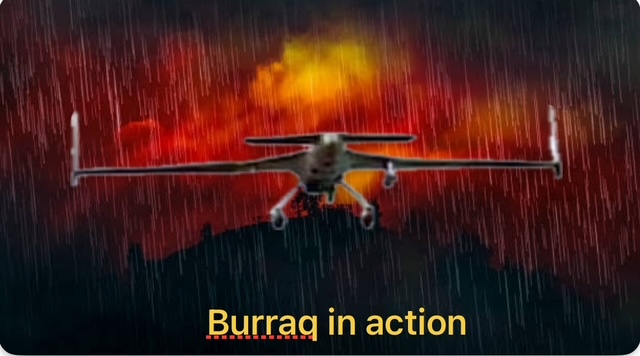
Dr. Naveed Elahi
The recent drone strike in Mardan’s Katlang region that neutralized several suspected Tehreek-e-Taliban Pakistan (TTP) militants has sparked widespread national debate. Critics have questioned the legality, transparency, and potential civilian toll of such operations. However, government officials assert that the strike was carried out in a remote, mountainous area with no civilian presence, emphasizing its alignment with Pakistan’s National Action Plan (NAP) and the broader counter-terrorism framework.
As Pakistan navigates an evolving security landscape marked by asymmetric threats and rugged geographies, the use of Unmanned Aerial Vehicles (UAVs), or drones, is emerging as a tactical imperative. While public scrutiny is valid, it must be balanced with an informed understanding of both the strategic utility and regulatory safeguards surrounding drone operations.
The Mardan Operation: A Case Study in Targeted Precision
The Mardan drone strike, carried out on March 29, was based on credible intelligence pinpointing a militant hideout and logistical base used by TTP operatives. Interior Minister Talal Chaudhry stated that the strike site was carefully chosen to avoid civilian harm — adhering to the National Action Plan’s emphasis on minimizing collateral damage.
While some opposition voices allege the death of civilians, including a reported schoolboy in a separate North Waziristan incident, these claims remain unverified. If proven, such tragedies must be addressed transparently. However, these isolated cases should not overshadow the effectiveness of precision-based operations. Tactical gains in the fight against terrorism must be accompanied by a commitment to accountability — but not be derailed by politicization.
Why Drones Matter: A Tactical Rationale
Drone technology has revolutionized modern warfare — particularly in counter-terrorism settings. In regions like the Pak-Afghan border, characterized by treacherous terrain and limited access, UAVs offer unique advantages. Ground operations in these areas are both perilous and logistically challenging, making drone strikes an efficient alternative.
UAVs enable surgical strikes with minimal risk to military personnel and reduced collateral damage compared to traditional air raids or artillery shelling. Their real-time surveillance capabilities and precision targeting make them ideal for dismantling small, mobile terror cells entrenched in hard-to-reach zones. According to a study by the Air University, the adaptability of terror networks necessitates equally adaptive counter-strategies — and drones have become a cornerstone of that response.
Experts from the Congressional Research Service highlight that UAVs offer sustained surveillance and accurate targeting in inaccessible areas, making them ideal for counter-terrorism in regions like the Pak-Afghan border. Analysts like Linda Robinson from RAND Corporation emphasize that drones provide crucial real-time intelligence and pattern analysis where human operatives lack visibility. Pakistani security officials also acknowledge drones as vital for situational awareness in volatile areas like KP and Balochistan. More importantly, drones enhance operational efficiency while minimizing troop risk, making them an indispensable asset in counter-insurgency efforts in such areas.
The advantages of using UAVs in Pakistan’s ongoing operations against TTP and BLA militants are increasingly evident. Drones can stay over target areas far longer than manned aircraft, offering continuous surveillance in difficult terrains. They are cost-effective, difficult to detect, and eliminate the risk to human pilots. With precision-guided munitions, UAVs can accurately strike high-value targets the moment they appear — especially useful against militants who frequently relocate.
Extending the Strategy: Countering Insurgency in Balochistan
The strategic value of drone strikes is not confined to KP or the tribal belt. In Balochistan, where groups like the Balochistan Liberation Army (BLA) operate from mountainous hideouts, drones could prove equally effective. Drones can track down the militants in far flung and highly perched hide-outs, where it is dangerous and difficult for the security personnel to carry out search operations. More importantly, precision strikes can disrupt insurgent networks without the collateral impact of conventional military operations, which often alienate local communities. In Jafer Express hijacking incident, drones were effectively used to chase, spy and track the retreating militants in the mountains. The forces managed to kill at least thirty-five militants. If need be, drone attacks can be extended to BLA camps in Afghanistan, especially in Kandahar.
Pakistan’s indigenous drones and missiles
Pakistan primarily uses the indigenously developed Burraq drone for locating and neutralizing terrorist targets, particularly in rugged regions like the Pak-Afghan border. Developed by Pakistan Aeronautical Complex and NESCOM, the Burraq is equipped with Barq laser-guided missiles and is capable of real-time surveillance and precision strikes, first used in combat against the TTP militants in erstwhile FATA in 2015. Alongside Burraq, Pakistan employs unarmed UAVs like Shahpar and Uqab for reconnaissance, and is also expanding its drone capabilities through collaboration with China to acquire Wing Loong II, a more advanced armed drone. These UAVs have become vital assets in Pakistan’s counter-terrorism operations to avoid losses of lives of the security personnel and hit the targets with precision.
Addressing the Civilian Cost: Technology with Accountability
Civilian harm in drone warfare remains a legitimate concern. Yet technological advancements have significantly improved targeting accuracy. Global studies — including those by the European Parliament — stress the importance of compliance with international law and local oversight in such operations.
Pakistan can build on this by establishing judicial review boards and civilian oversight mechanisms to evaluate drone use and outcomes. Transparency, reporting protocols, and redress mechanisms for victims should be embedded in the system. This balanced approach preserves both national security and democratic accountability.
Therefore, drone operations in Pak-Afghan border belt and Balochistan — or anywhere — must follow strict protocols: validated intelligence, real-time ground coordination, and absolute non-engagement in civilian zones to avoid controversy which had erupted during the US drone campaign during War on Terror. Responsible deployment can ensure not only operational success but also sustained public trust.
Conclusion:
Drones are not a silver bullet, but in asymmetric warfare, they are an invaluable force multiplier. As security threats evolve, so must the state’s response. It is obvious that drones offer a strategic edge in regions where conventional methods fall short. If through drone campaign Pakistan manages to minimize the losses of the lives of its security personnel and hit the terrorists effectively, this strategy must be permanent part of its CT strategy. The only caution is to avoid the collateral damage of the civilians. With robust oversight and a commitment to minimizing harm, Pakistan can harness this technology to protect its citizens, uphold the rule of law, and restore stability across its most vulnerable areas.
The author is Chief Editor of The Strategic Brief


